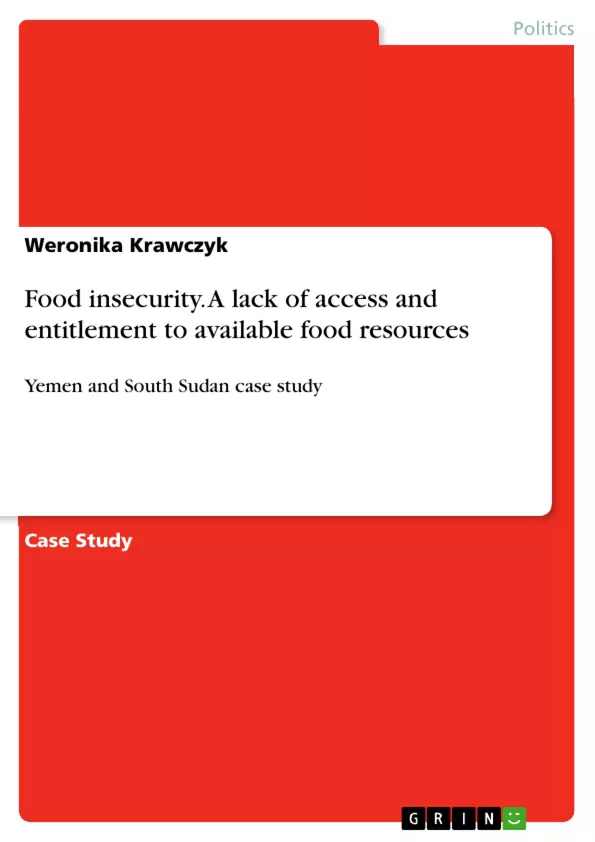Food insecurity as experienced by individuals and households is often argued to be the result of a lack of access and entitlement to available food resources. This essay examines this thesis by looking at the examples of Yemen and South Sudan.
Inhaltsverzeichnis (Table of Contents)
- Food security in the Global South
- Food entitlement and access
- Livelihood strategies
- Food insecurity in the context of conflict
- Yemen: A Case Study of Food Insecurity
- The roots of the crisis: Economic deterioration and civil unrest
- The impact of the conflict on food security
- The collapse of coping mechanisms
- The humanitarian crisis
- South Sudan: A Case Study of Food Insecurity
- The role of conflict in exacerbating food insecurity
- The impact of the conflict on rural livelihoods
- The economic crisis and its impact on food security
Zielsetzung und Themenschwerpunkte (Objectives and Key Themes)
The main objective of this text is to analyze the complex interplay of factors leading to food insecurity in developing countries, particularly in the context of conflict. The text utilizes Yemen and South Sudan as case studies to illustrate how conflict, economic hardship, and societal vulnerabilities combine to create widespread food insecurity.
- The concept of food security and its link to food entitlement
- The role of livelihood strategies in mitigating food insecurity
- The impact of conflict on food security and livelihoods
- The economic factors contributing to food insecurity in conflict zones
- The humanitarian consequences of food insecurity in conflict-affected countries
Zusammenfassung der Kapitel (Chapter Summaries)
The text begins by outlining the concept of food security and its connection to food entitlement, emphasizing that access to sufficient food is more than simply its availability. It then explores the role of livelihood strategies in securing food access, highlighting the dynamic and often fragile nature of these strategies in the face of various stressors and shocks. The text then shifts focus to the specific case studies of Yemen and South Sudan.
The Yemen case study examines the devastating impact of conflict on food security, tracing the deterioration from economic crisis to civil unrest and ultimately a full-blown humanitarian crisis. The text highlights the collapse of coping mechanisms, soaring food prices, and the dramatic rise in malnutrition, particularly affecting children.
The South Sudan case study examines the similar link between protracted conflict and food insecurity, highlighting the reliance on agriculture and the impact of violence on rural livelihoods, trade, and access to markets. The text also details the economic crisis, with hyperinflation, currency devaluation, and import restrictions further exacerbating food insecurity.
Schlüsselwörter (Keywords)
The text focuses on the key concepts of food security, food entitlement, livelihood strategies, conflict, humanitarian crisis, economic crisis, and the impact of conflict on developing countries. It further explores specific case studies of Yemen and South Sudan, highlighting their unique challenges and the complexities of food insecurity in these conflict-affected regions.
- Quote paper
- Weronika Krawczyk (Author), 2017, Food insecurity. A lack of access and entitlement to available food resources, Munich, GRIN Verlag, https://www.grin.com/document/421548



